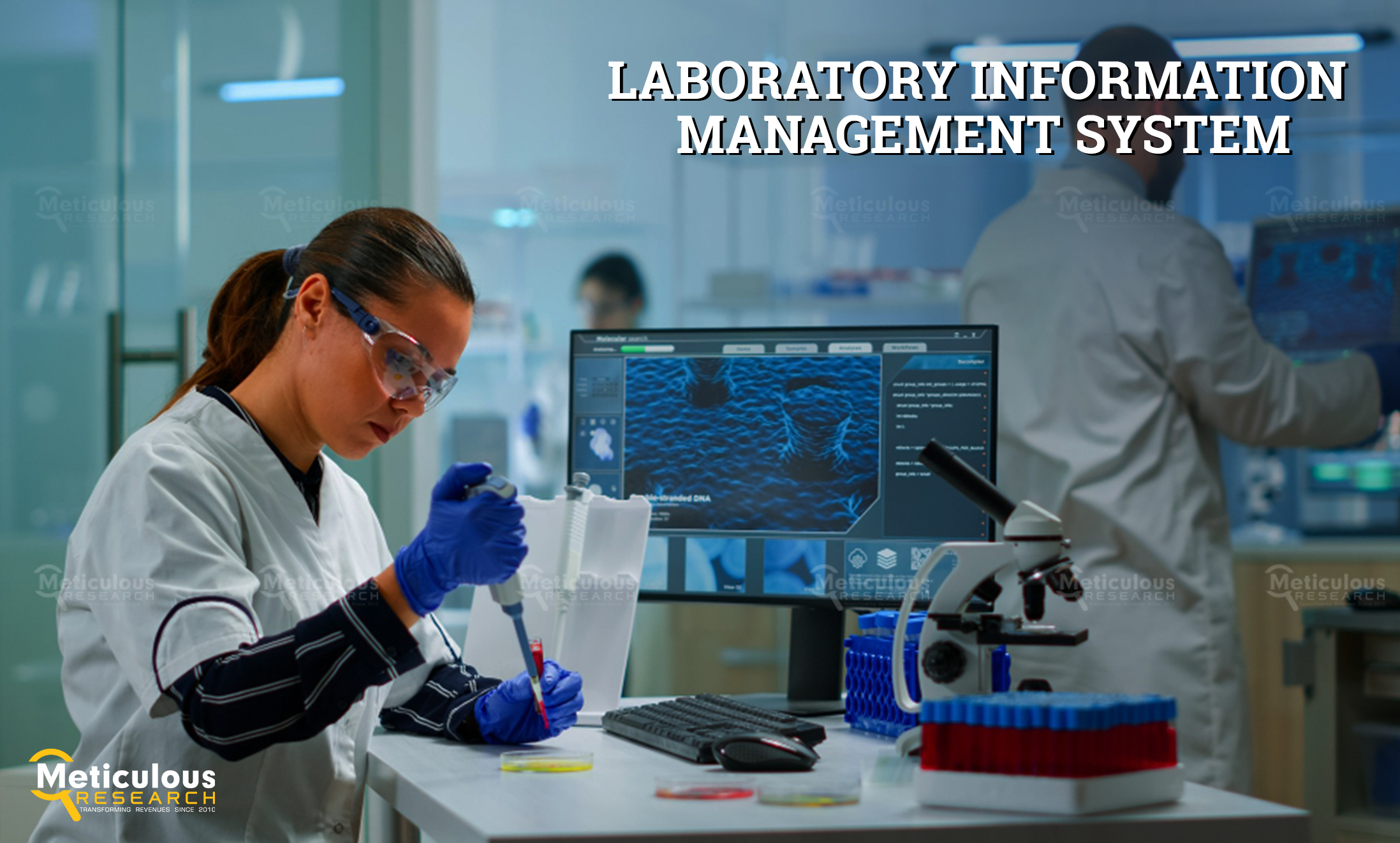
The Laboratory Information Management System Market is anticipated to grow at a compound annual growth rate (CAGR) of 7.4% between 2023 and 2030, reaching a total value of $1.75 billion by 2030.
Research and development (R&D) organizations are at the forefront of innovation, generating vast amounts of data through the development of new products and modifications to existing ones. However, these organizations often grapple with significant data management challenges when relying on outdated laboratory data processes, such as paper-based systems or Excel spreadsheets. Such inefficiencies become even more pronounced in larger organizations with multiple sites that use various legacy Laboratory Information Management Systems (LIMS), each with differing capabilities and degrees of interconnectedness. This lack of standardization and efficiency can hinder productivity and complicate data management.
The Role of LIMS in Data Organization
LIMS plays a crucial role in organizing R&D data by categorizing it into distinct projects, studies, and experiments. This structured organization allows for quick and accurate information retrieval, significantly improving the productivity of laboratory personnel. Furthermore, LIMS enhances daily operations by facilitating resource monitoring and task assignments, ensuring that researchers can focus more on their work rather than administrative overhead.
Pharmaceutical companies, which heavily invest in R&D as a core aspect of drug development processes, stand to benefit greatly from effective data management solutions. The biotechnology industry is also witnessing substantial growth due to increased investments aimed at addressing the rising demand for innovation and new medical breakthroughs. The importance of R&D is underscored by the increasing number of drug approvals, reflecting the industry’s need for efficient laboratory processes.
Download Sample Report Here: https://www.meticulousresearch.com/download-sample-report/cp_id=4009
The Surge in Drug Approvals
For instance, the U.S. Food and Drug Administration (FDA) approved 53 novel drugs in 2020, up from 48 in 2019. This upward trend indicates the industry’s heightened focus on R&D and the subsequent necessity for effective laboratory data management systems. As global pharmaceutical R&D expenditures continue to increase, so does the demand for LIMS. These systems facilitate efficient laboratory data management by allowing researchers to minimize human error through automated workflows, track reagents and lots, and centralize the access and storage of quality control data.
LIMS also enhances data integrity through automatic audit logging and revision control, making it indispensable for pharmaceutical companies and contract research organizations (CROs). Furthermore, these systems can seamlessly integrate with various instruments and in-lab systems, improving overall laboratory efficiency.
The Impact of Laboratory Automation
In addition to LIMS, laboratory automation is transforming research workflows across various industries. Automation technology has rapidly evolved, initially serving large pharmaceutical and biotechnology companies but now catering to a broader audience in the life sciences sector. Automation solutions are designed to enhance productivity, accuracy, throughput, and efficiency while simultaneously reducing errors and costs.
The advent of advanced laboratory automation technologies has dramatically changed the landscape of R&D workflows. Automated lab instruments, software solutions, and processes help minimize human error, shorten cycle times, and streamline operations. These systems not only improve data management and product quality but also ensure compliance with industry regulations.
The need for laboratory automation arises from the growing volumes of data that organizations must manage. Efficient data storage, analysis, and sharing solutions are critical for maintaining competitive advantage and meeting regulatory requirements. Informatics solutions, including LIMS, are instrumental in enhancing the effectiveness and efficiency of laboratory operations. By automating laboratory processes and integrating data, organizations can facilitate scientific decision-making, allowing lab professionals to advance research, development, and manufacturing more effectively.
Check complete table of contents with list of tables and figures: https://www.meticulousresearch.com/product/laboratory-information-management-system-market-4009
Trends Driving the Laboratory Information Management Market
Several trends are fueling the growth of the laboratory information management market:
1. **Increased R&D Spending**: The life sciences sector is witnessing a surge in R&D investments, prompting organizations to adopt efficient data management systems like LIMS to keep pace with innovation. Higher R&D spending correlates directly with a growing need for effective laboratory data management.
2. **Need for Automation**: As laboratories face increasing data volumes, the demand for automation solutions has become paramount. Automated systems not only enhance productivity but also improve the accuracy of data management, thereby driving the adoption of LIMS and other informatics solutions.
3. **Focus on Data Integrity and Compliance**: Regulatory compliance is crucial in the life sciences sector. LIMS helps organizations maintain data integrity, streamline workflows, and ensure compliance with various regulatory standards. As the importance of compliance continues to rise, so too does the demand for robust laboratory information management systems.
4. **Integration with Advanced Technologies**: The integration of LIMS with emerging technologies such as artificial intelligence (AI), machine learning (ML), and data analytics is transforming how laboratories operate. These advanced technologies can provide insights into data patterns, enhance decision-making capabilities, and optimize laboratory workflows.
5. **Customization and Scalability**: Modern LIMS solutions are increasingly customizable and scalable, making them suitable for a wide range of laboratory sizes and types. This adaptability allows organizations to tailor their systems to specific needs, further driving the adoption of LIMS across various sectors.
Future Projections for the Laboratory Information Management Market
According to Meticulous Research®, the global laboratory information management market is projected to reach $1.75 billion by 2030, growing at a compound annual growth rate (CAGR) of 7.4% during the forecast period from 2023 to 2030. This growth reflects the ongoing transformation of laboratory operations driven by advancements in technology and the increasing emphasis on data management and automation.
Quick Buy: https://www.meticulousresearch.com/Checkout/99558994
Scope of the Laboratory Information Management System Market Report:
Lab Information Management System Market, by Mode of Delivery
- Web and Cloud-based LIMS
- On-Premise LIMS
Lab Information Management System Market, by Offering
- Software
- Services
Lab Information Management System Market, by Type
- Multi-purpose LIMS
- Purpose-built LIMS
Lab Information Management System Market, by End User
- Life Sciences
- Pharmaceutical & Biotechnology Companies
- Academic & Research Institutes
- Biobanks & Biorepositories
- Contract Research Organizations (CROs)
- Other End Users
- Food & Beverage Industry
- Chemical Industry
- Petrochemicals and Oil & Gas Industries
- Environmental Testing Laboratories
- Others
(Note: Other end users include hospitals, medical device companies, diagnostic laboratories, and toxicology testing laboratories.
Others include forensic laboratories, mining & metal laboratories, and contract manufacturing organizations (CMOs).)
Lab Information Management System Market, by Geography
- North America
- U.S.
- Canada
- Europe
- Germany
- U.K.
- France
- Italy
- Spain
- Rest of Europe (RoE)
- Asia-Pacific (APAC)
- China
- Japan
- India
- Rest of APAC (RoAPAC)
- Latin America
- Brazil
- Mexico
- Rest of Latin America (RoLATAM)
- Middle East & Africa
About Meticulous Research®
Meticulous Research® is a leading provider of comprehensive market intelligence, offering actionable insights and analysis across various industries. Our reports empower businesses to make informed decisions, drive growth, and remain competitive in a rapidly evolving marketplace.
Contact Us:
Meticulous Market Research Pvt. Ltd.
1267 Willis St, Ste 200 Redding,
California, 96001, U.S.
USA: +1-646-781-8004
Europe : +44-203-868-8738
APAC: +91 744-7780008
Email- sales@meticulousresearch.com
Visit Our Website: https://www.meticulousresearch.com/
Connect with us on LinkedIn- https://www.linkedin.com/company/meticulous-research






